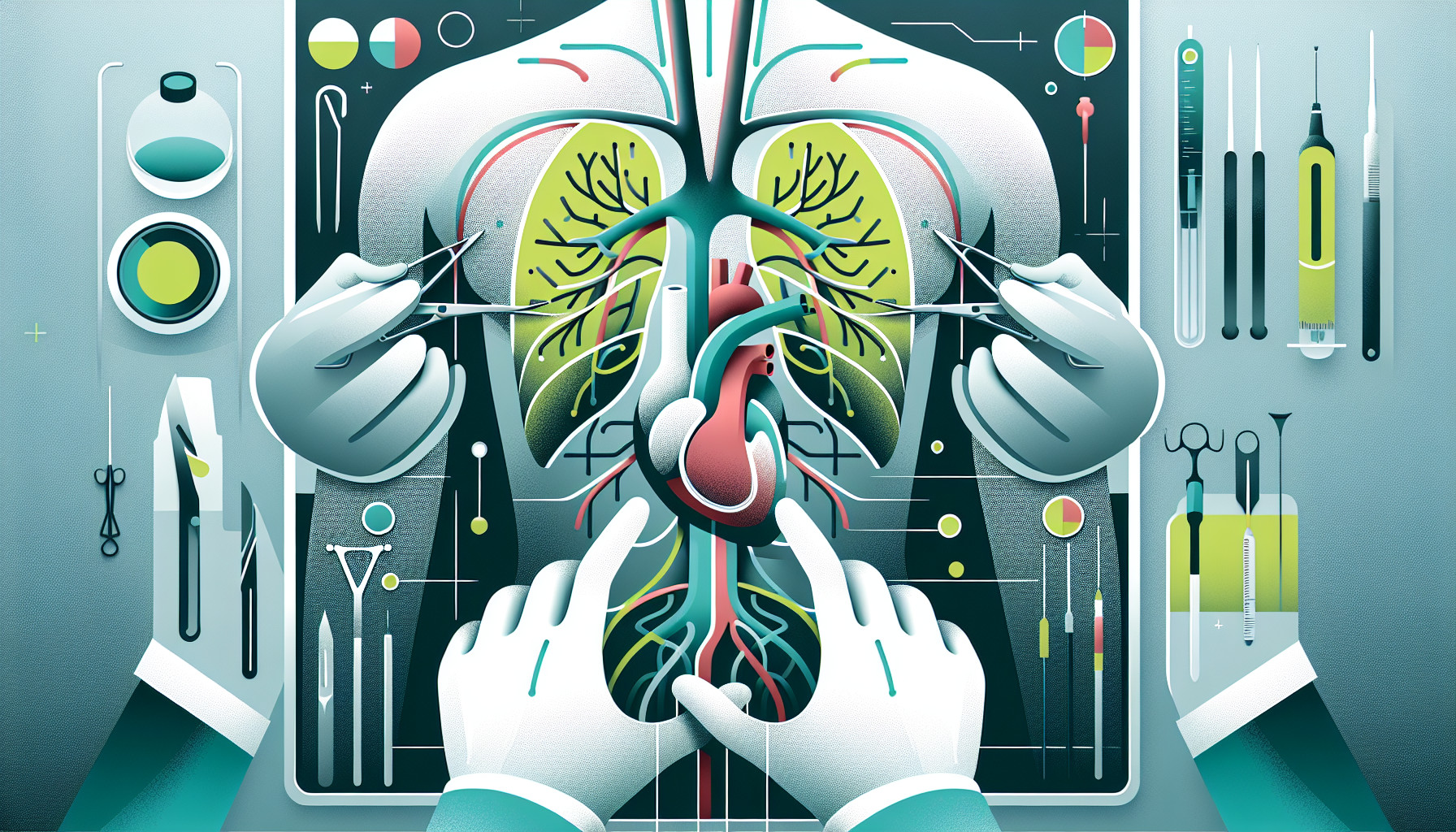Our Summary
This research paper discusses the challenges faced by anesthesiologists while treating patients with abdominal aortic aneurysm, a condition where the main blood vessel in the body bulges or swells. The condition can be life-threatening if the blood vessel bursts. The treatment, which involves surgery, is difficult because of the risk of rapid blood loss, potential complications during the surgery, and the need for special procedures like bypassing the heart or isolating the lung. The patient may also require a spinal drain, a procedure to remove fluid from around the spinal cord. Moreover, patients often have other serious health conditions, making the situation more complicated. Therefore, a deep understanding of the disease, the body’s response throughout the surgery, and the delicate task of protecting the organs is crucial for successful treatment.
FAQs
- Why are open thoracoabdominal and abdominal aortic aneurysm repairs considered challenging for anesthesiologists?
- What are the potential needs and procedures involved in an aortic aneurysm repair?
- What is the importance of understanding the disease process, complex physiology, and organ protection in aortic aneurysm repair?
Doctor’s Tip
One helpful tip a doctor might tell a patient about aortic aneurysm repair is to follow post-operative care instructions carefully, including avoiding heavy lifting and strenuous activity to prevent further damage to the repaired artery. It is also important to attend follow-up appointments and monitor for any signs of complications, such as sudden severe pain, weakness, or changes in the color or temperature of the affected limb.
Suitable For
Patients who are typically recommended for aortic aneurysm repair are those who have a large aneurysm that is at risk of rupture, causing potentially life-threatening bleeding. Patients with a family history of aortic aneurysms, connective tissue disorders such as Marfan syndrome, or a history of smoking are also at higher risk for developing aortic aneurysms and may be recommended for repair. Additionally, patients who are symptomatic with chest or abdominal pain, back pain, or other symptoms related to the aneurysm may also be candidates for repair. Overall, the decision to recommend aortic aneurysm repair is based on the individual patient’s risk factors, symptoms, and overall health status.
Timeline
Before aortic aneurysm repair:
- Patient undergoes diagnostic tests such as CT scans or ultrasound to confirm the presence and size of the aneurysm
- Patient may be monitored closely for symptoms such as chest or back pain, shortness of breath, or a pulsating feeling in the abdomen
- Patient may undergo preoperative evaluations to assess overall health and readiness for surgery
- Patient may receive preoperative instructions regarding fasting, medication management, and other preparations for surgery
After aortic aneurysm repair:
- Patient is closely monitored in the intensive care unit (ICU) for potential complications such as bleeding, infection, or organ dysfunction
- Patient may require mechanical ventilation and other supportive measures to ensure stable vital signs and organ function
- Patient may undergo rehabilitation and physical therapy to regain strength and mobility after surgery
- Patient may require ongoing follow-up appointments and monitoring to assess long-term outcomes and potential recurrence of the aneurysm
What to Ask Your Doctor
- What are the risks and benefits of undergoing aortic aneurysm repair surgery?
- What is the success rate of this type of surgery?
- What is the recovery process like after surgery?
- How long will I need to stay in the hospital after the surgery?
- What kind of follow-up care will be needed after the surgery?
- What are the potential complications of the surgery?
- Will I need any additional procedures or treatments after the surgery?
- How will the surgery affect my overall health and quality of life?
- Are there any lifestyle changes that I will need to make after the surgery?
- How often will I need to have follow-up appointments after the surgery?
Reference
Authors: Lester LC, Kostibas MP. Journal: Anesthesiol Clin. 2022 Dec;40(4):705-718. doi: 10.1016/j.anclin.2022.08.013. PMID: 36328624
